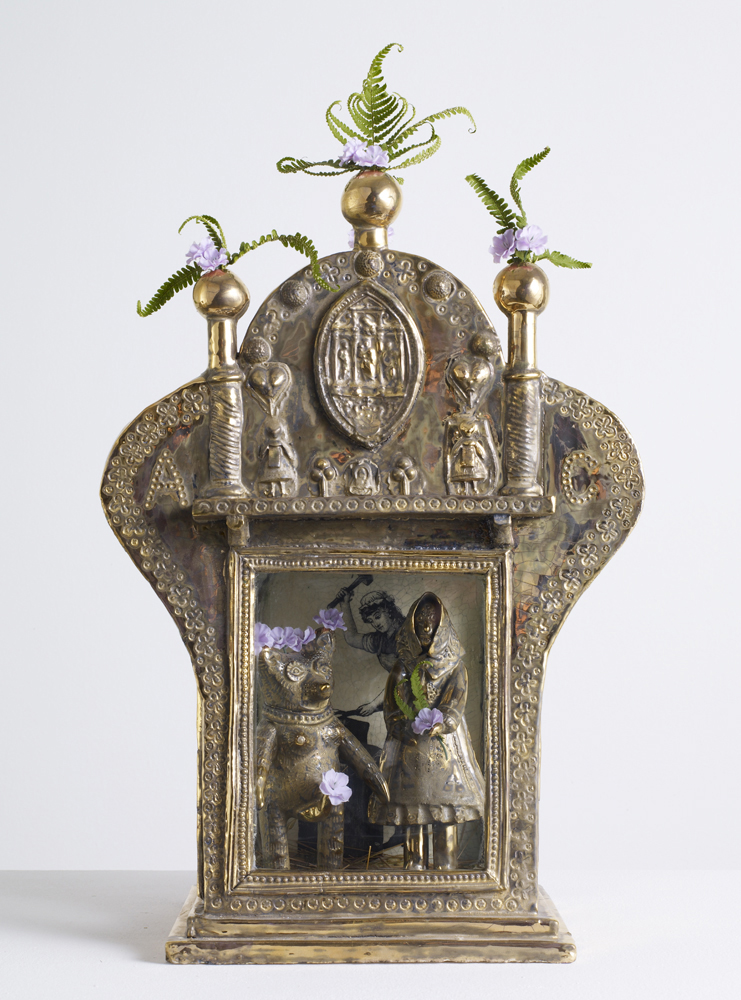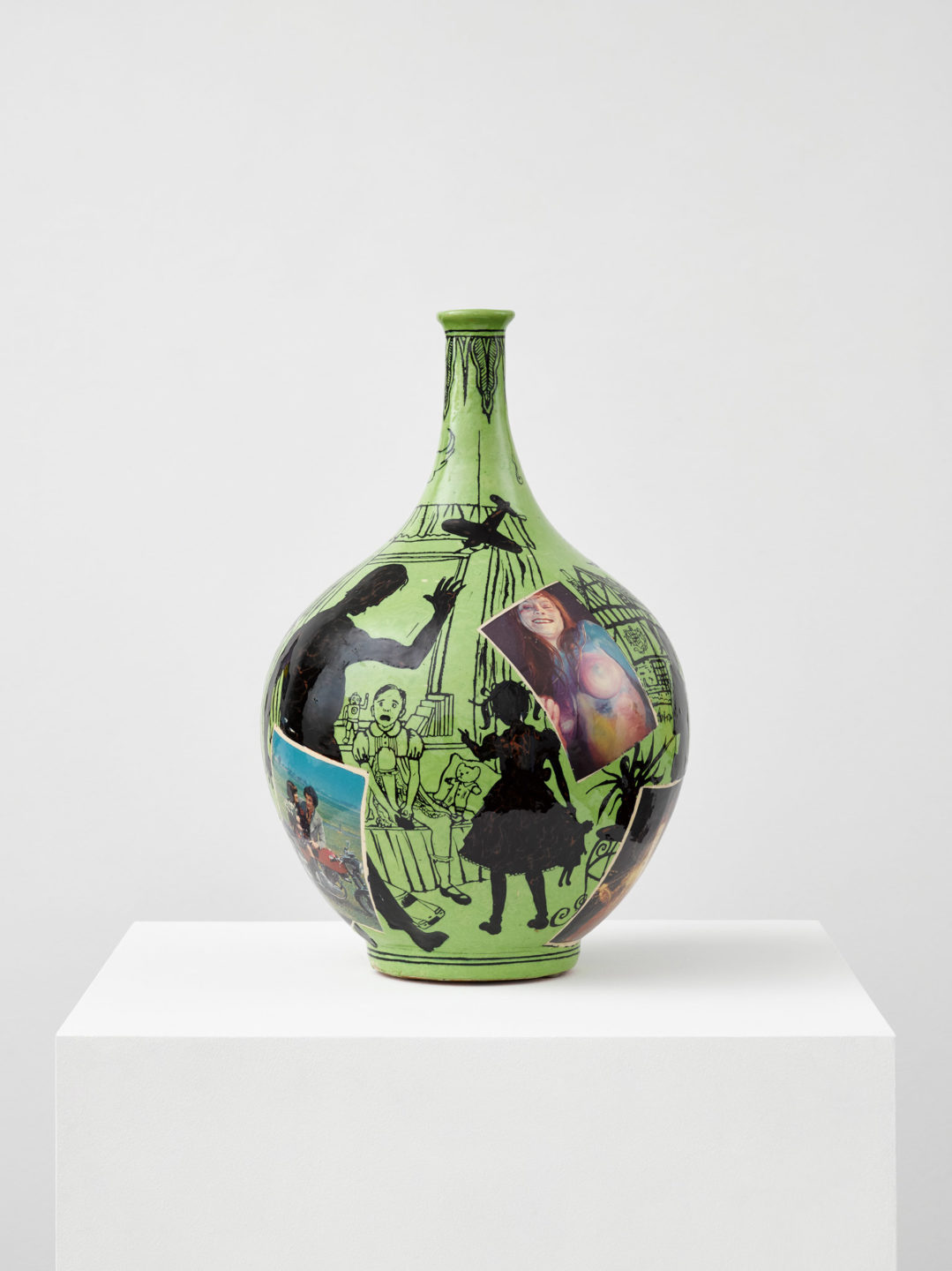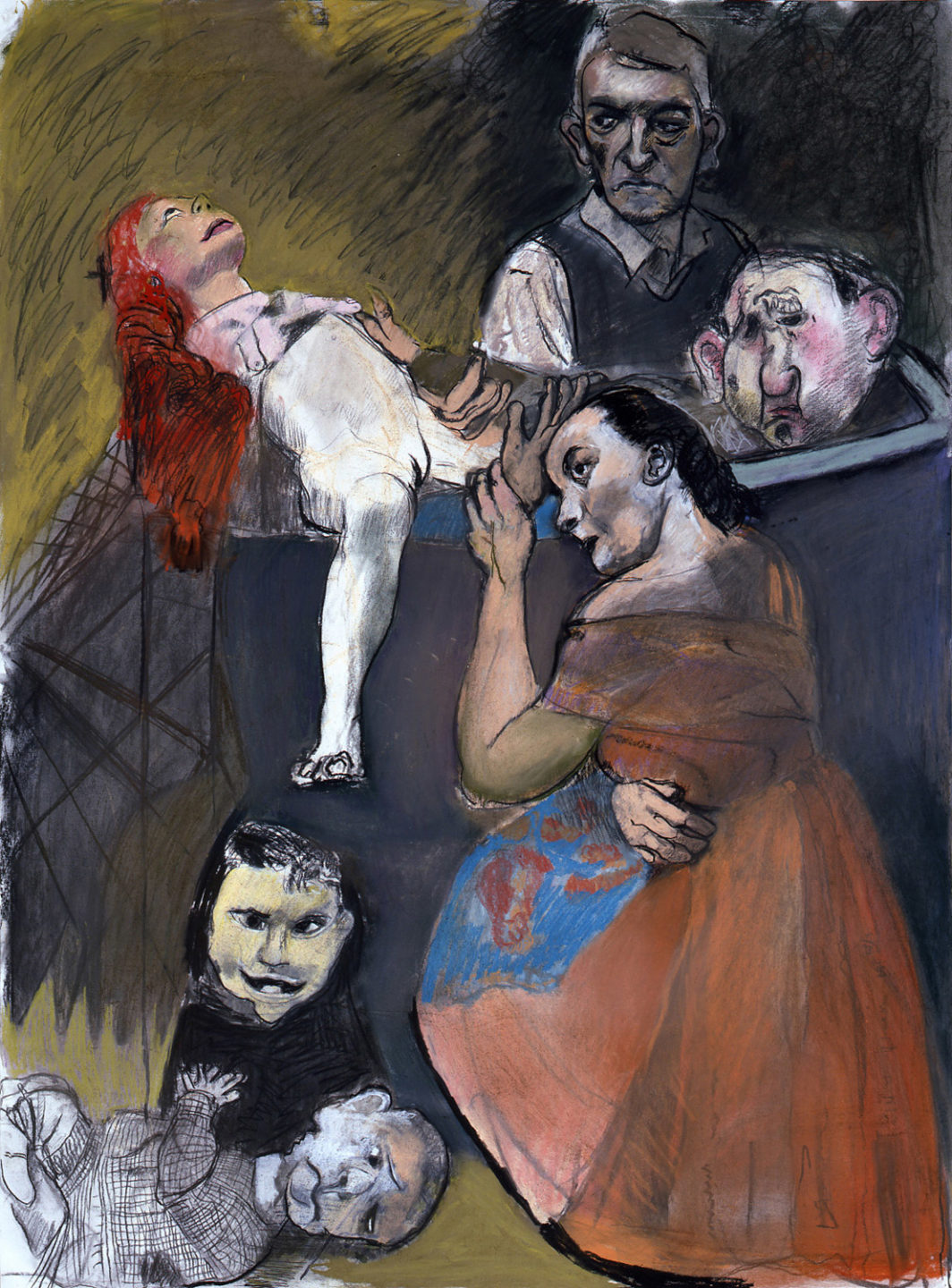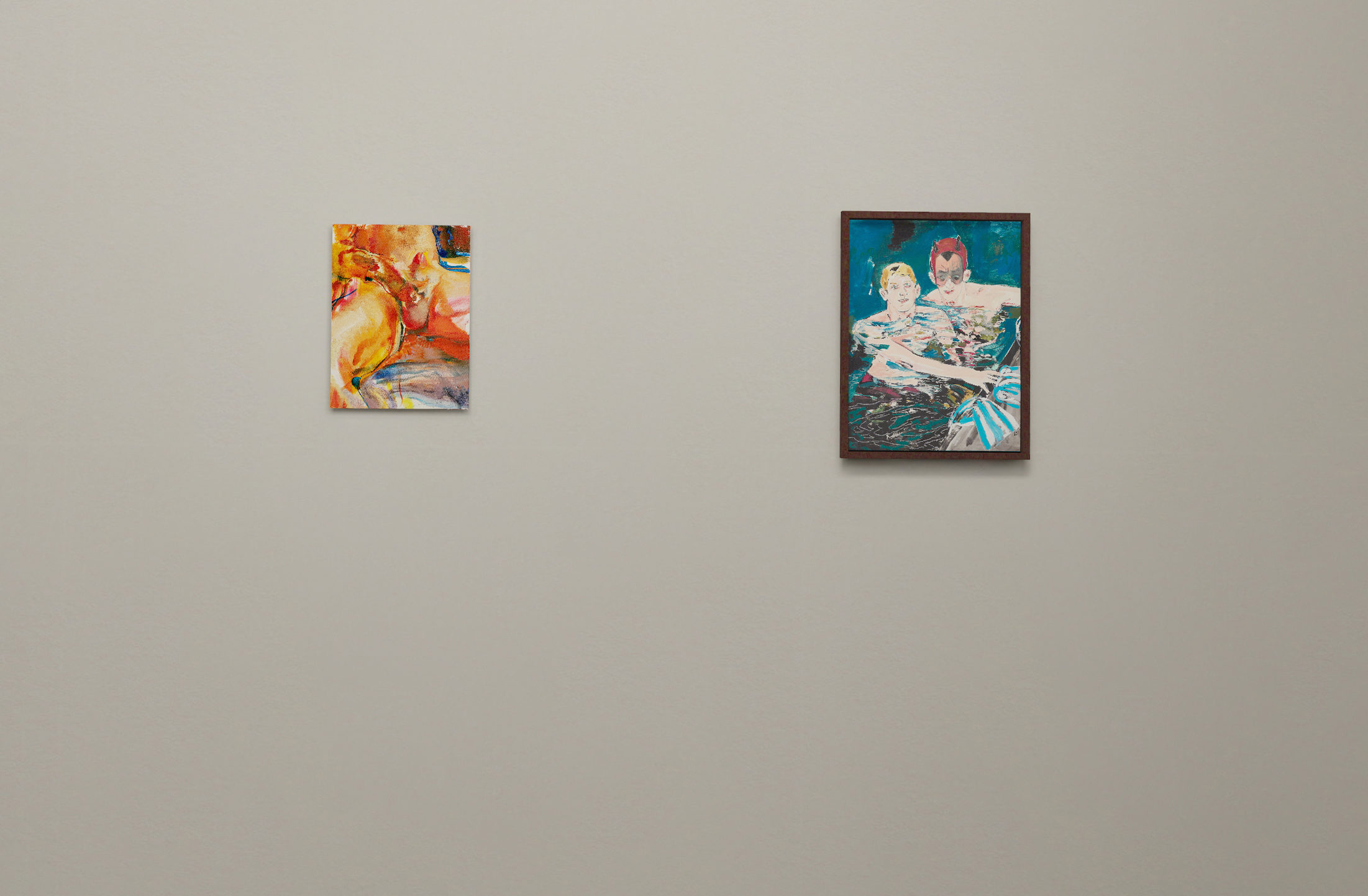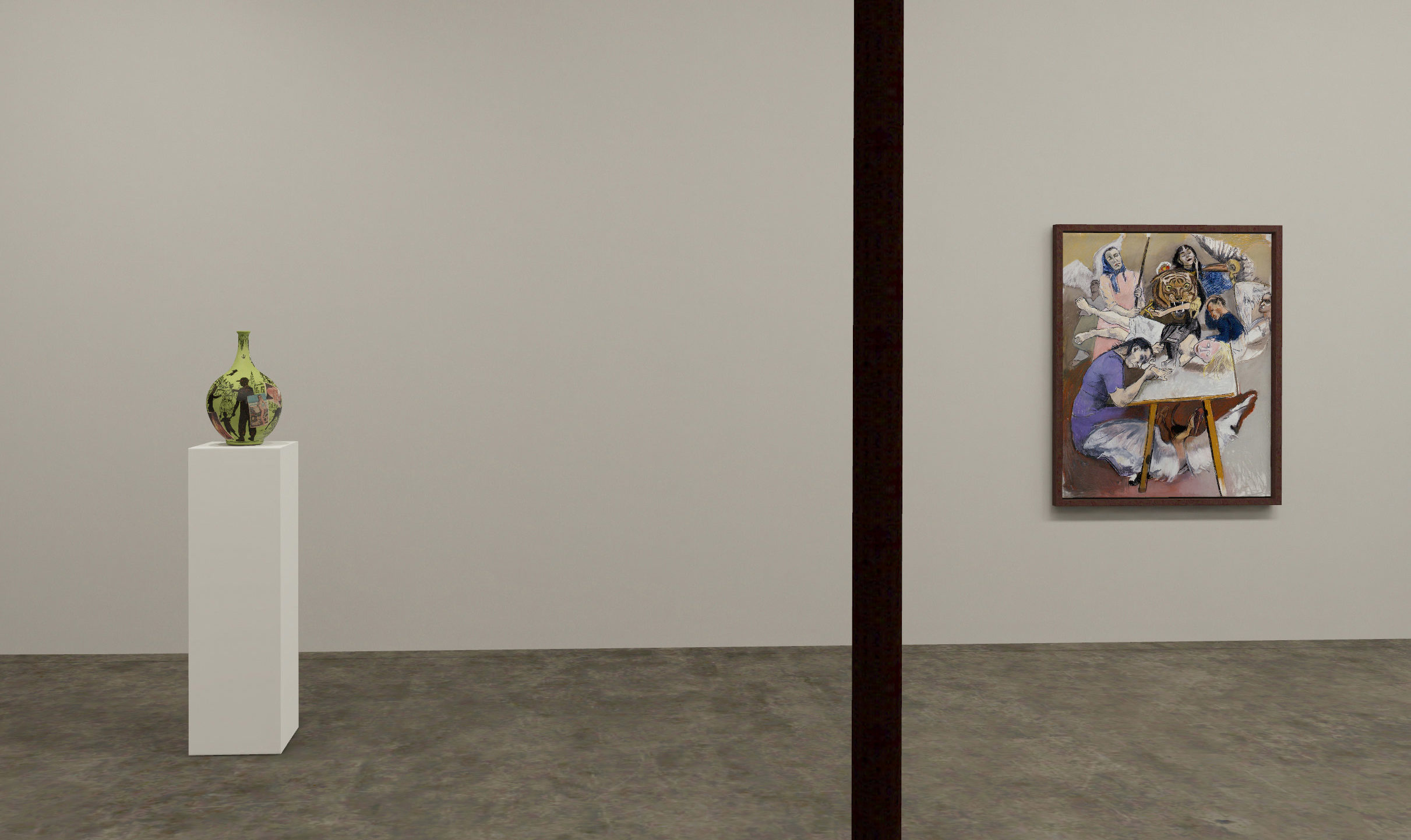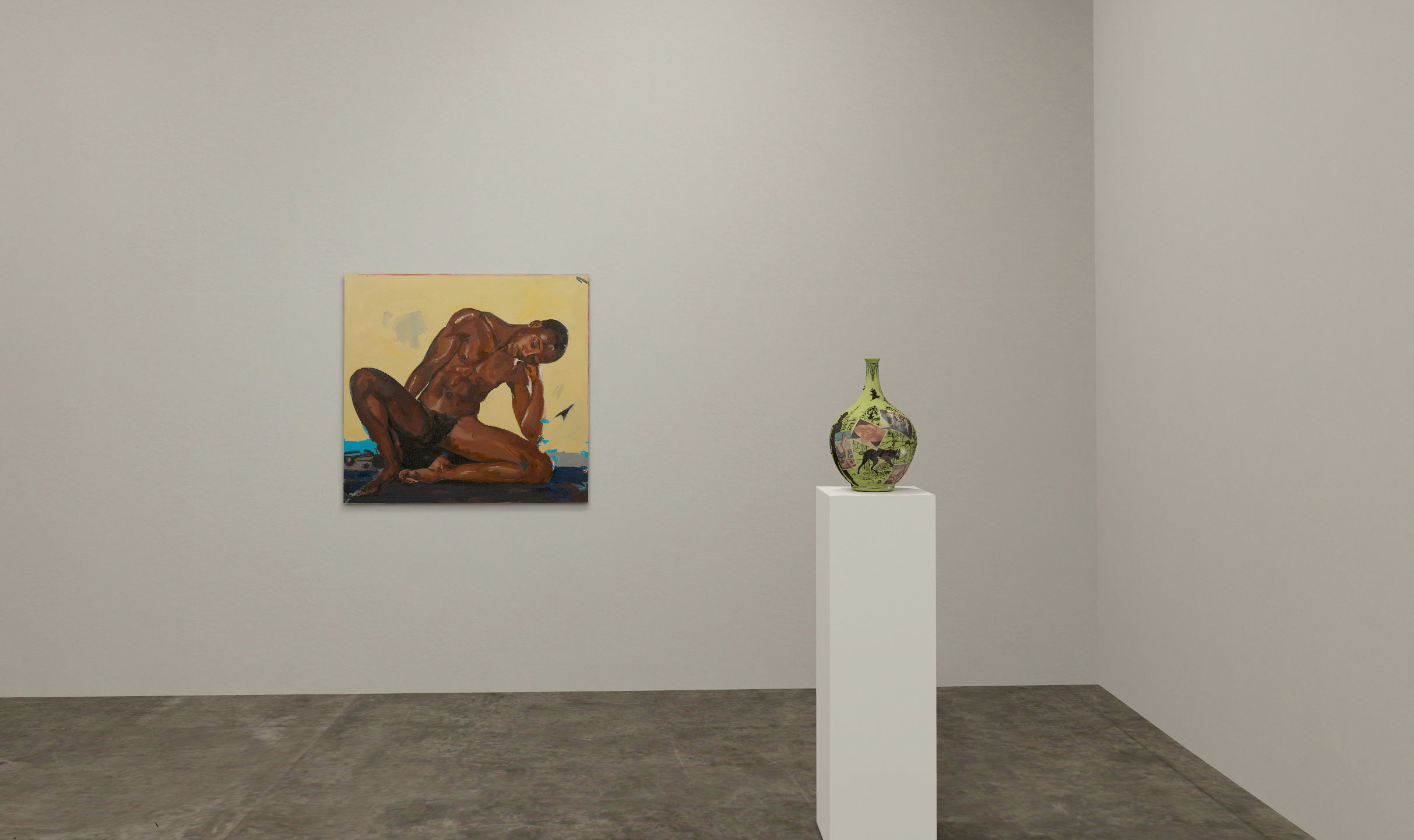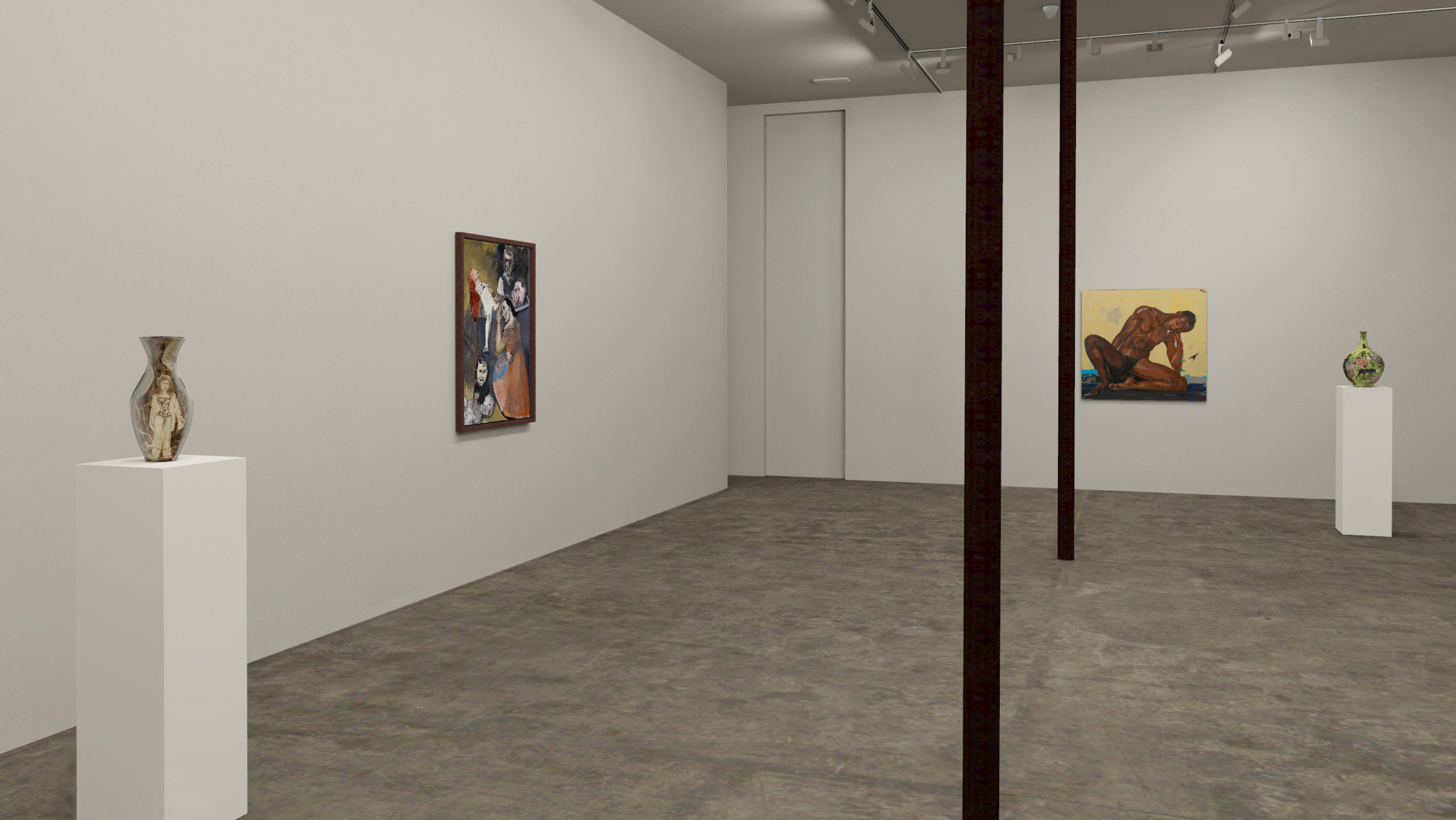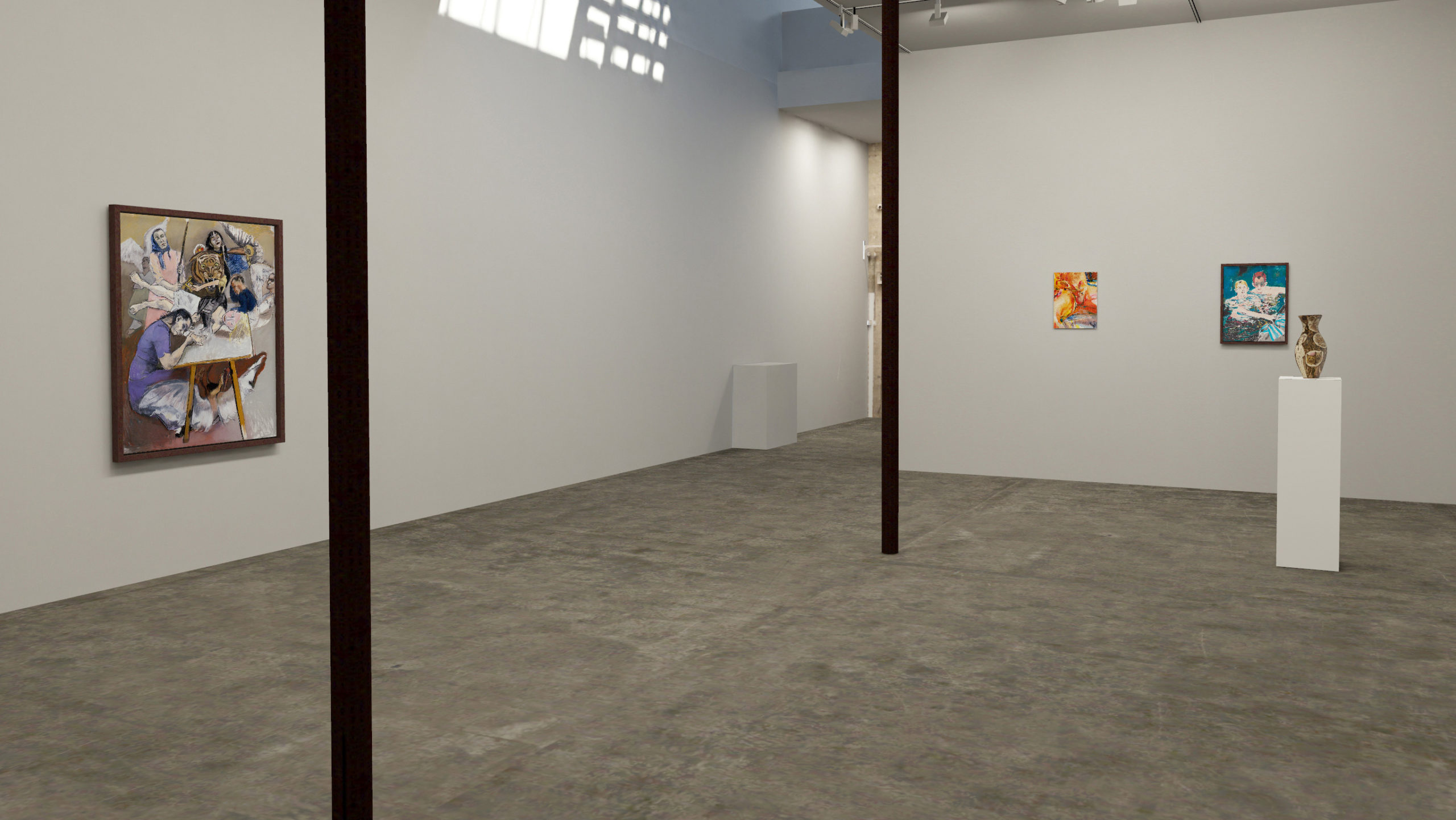Reprieve x Vortic
10 December 2020–31 January 2021
Victoria Miro is delighted to be a member of Reprieve Collective and participate in Reprieve x Vortic with an exhibition of works by Hernan Bas, Kudzanai-Violet Hwami, Doron Langberg, Grayson Perry and Paula Rego.
Launched on Human Rights Day by Reprieve, an organisation of courageous and committed human rights defenders, and Vortic, the leading XR platform for the art world, Reprieve Collective brings together prominent contemporary galleries who will each stage a virtual exhibition on the extended reality (XR) app Vortic Collect to help raise funds to support Reprieve’s global human rights initiatives.
Founded in 1999 by British human rights lawyer Clive Stafford Smith, Reprieve provides free legal and investigative support to some of the world’s most vulnerable people: those facing execution, and those victimised by states’ abusive counter-terror policies – rendition, torture, extrajudicial imprisonment and extrajudicial killing.
Human Rights Day is observed every year on 10 December – the day the United Nations General Assembly adopted, in 1948, the Universal Declaration of Human Rights (UDHR). The UDHR is a milestone document that proclaims the inalienable rights which everyone is entitled to as a human being – regardless of race, colour, religion, sex, language, political or other opinion, national or social origin, property, birth or other status.
Victoria Miro is a long term supporter of Reprieve and has worked with the charity since 2014 to raise funds and awareness through a series of talks, exhibitions and events.
Hernan Bas
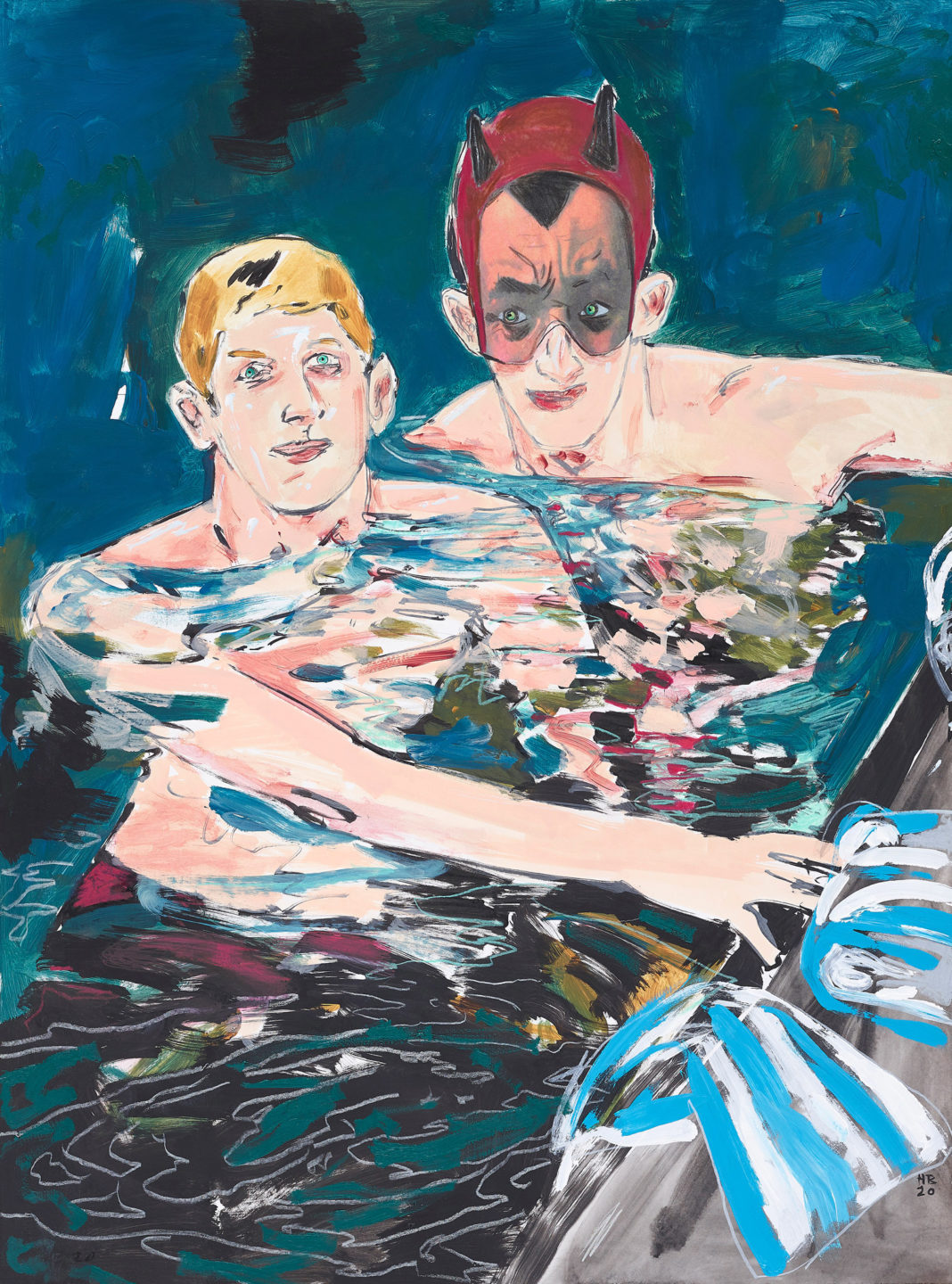
Acrylic, coloured pencil, gouache and collage on Arches paper
76.8 x 57.6 cm
30 1/4 x 22 3/4 in
Hernan Bas, Carnivale after dark (Venice), 2020
More infoHernan Bas is celebrated for works that, permeated by an aura of eroticism and decadence, and loaded with codes and double-meanings, point to the intricacies of self-identity, while celebrating moments of transformation – the ordinary becoming extraordinary.
The work on view is inspired by a residency with the gallery in Venice and weaves characteristically expansive lines of enquiry around themes of masquerade and carnival. Captured at various thresholds – between youth and adulthood, innocence and experience, public and private realms the figures in Hernan Bas’ works are charged with potential.
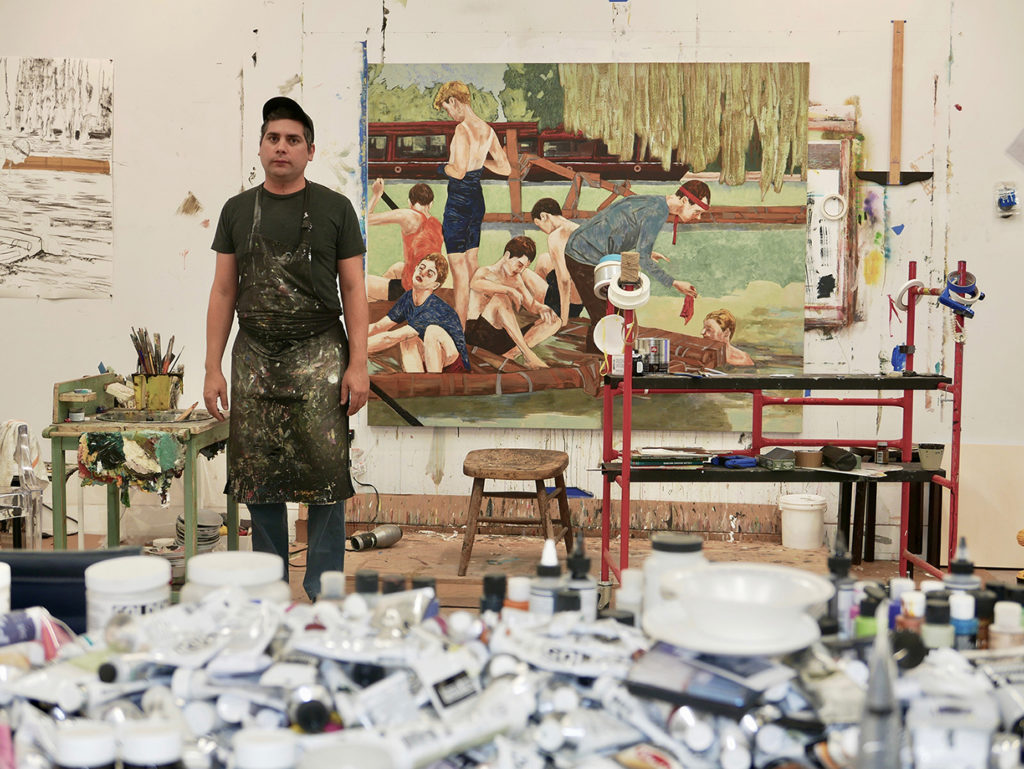
Kudzanai-Violet Hwami

Oil on canvas
130 x 138 cm
51 1/8 x 54 3/8 in
Kudzanai-Violet Hwami, Lotus, 2020
More info‘Although the person bears no resemblance to me I often like to think of the nude paintings as self portraits.’— Kudzanai-Violet Hwami
Now living in the UK, Kudzanai-Violet Hwami was born in Gutu, Zimbabwe in 1993 and lived in South Africa from the ages of nine to seventeen. Her work reveals a deeply personal vision of Southern African life. Drawing on her experiences of geographical dislocation and displacement, her paintings combine visual fragments from a myriad of sources such as online images and personal photographs, which collapse past and present.
Powerful nudes are a point of departure in works such as Lotus, 2020, a new painting created especially for this presentation. In such works, Hwami boldly raises questions about the black body and its representation, as well as meditating on themes of sexuality, gender and spirituality. Speaking about this work the artist says, ‘The image comes from an archive of vintage nudes I’ve collected since 2015. Although the person bears no resemblance to me I often like to think of the nude paintings as self portraits. In fear of altering my body permanently I’ve found it best to live through an imaged self, a way to exist as a transgender male.’
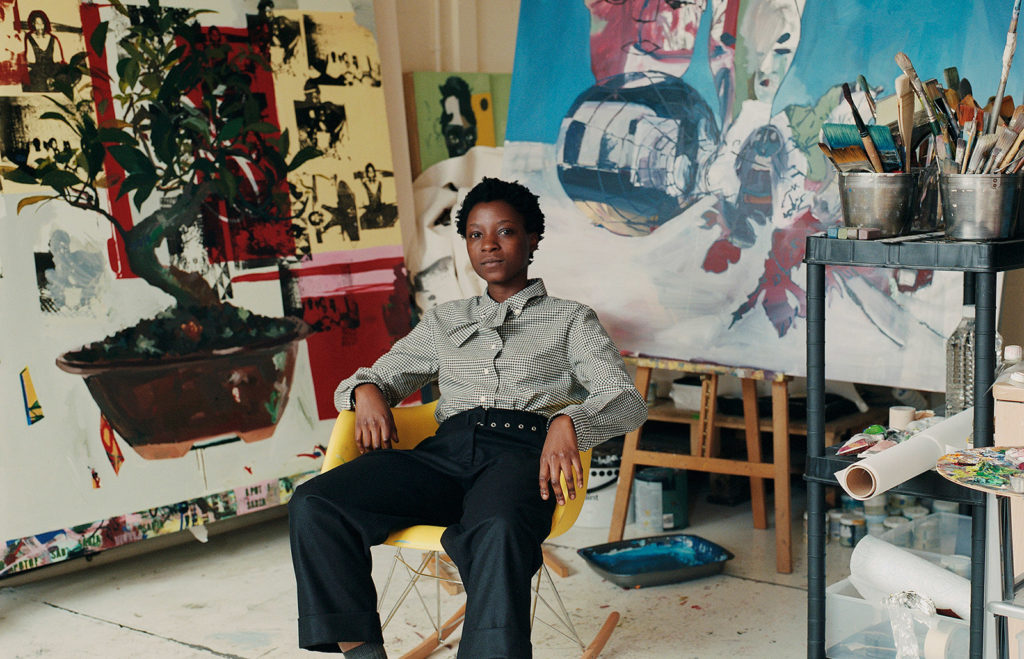
Doron Langberg
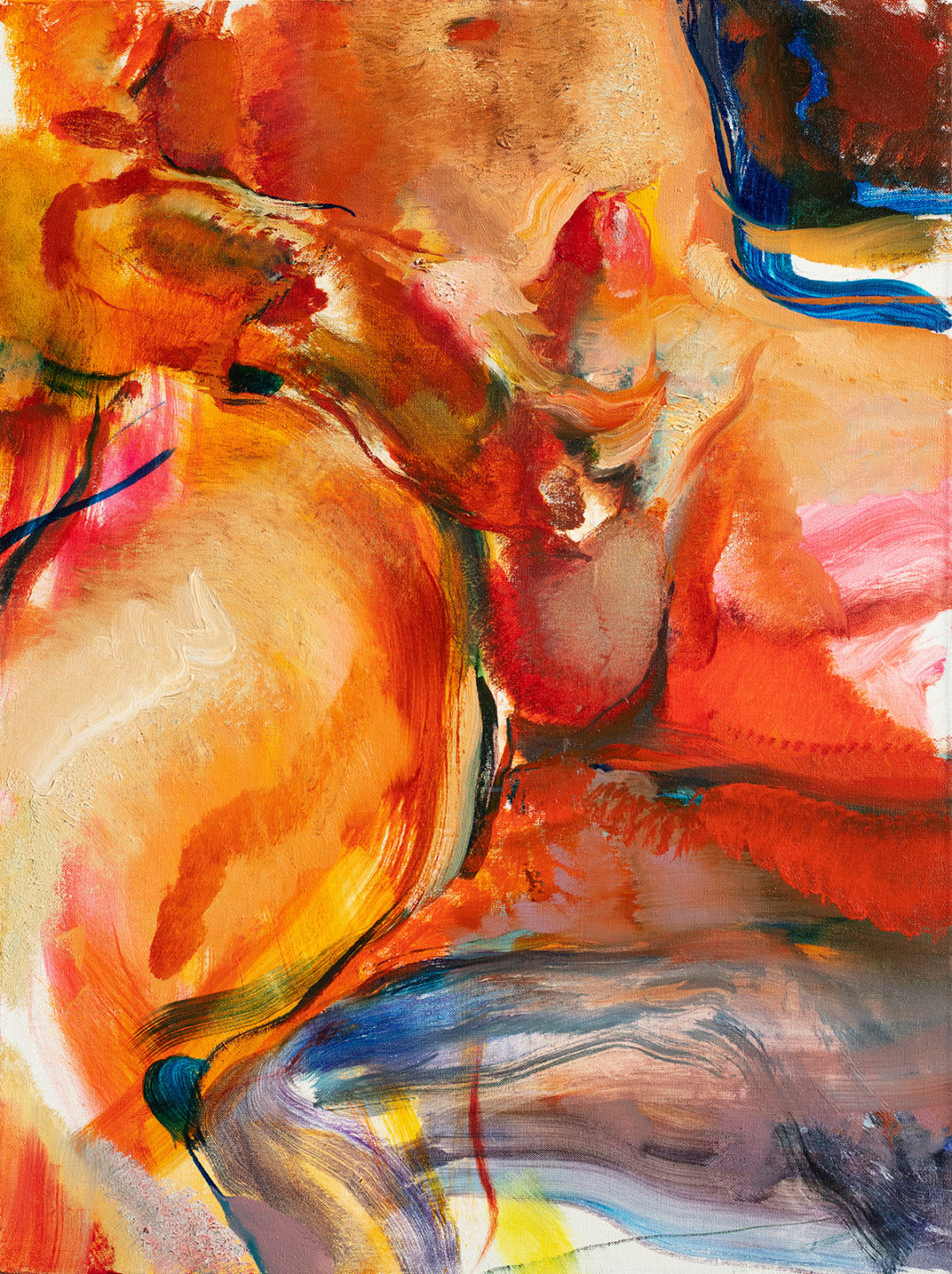
Oil on linen
61 x 45.7 cm
24 x 18 in
Doron Langberg, Vincenzo, 2020
More info‘In this painting of my friend Vincenzo, I used a chromatic palette and near-abstract depiction to give material form to the moment’s desirous and intimate feeling.’— Doron Langberg
An increasingly prominent voice among a new generation of figurative painters, Doron Langberg has gained a reputation for works that, luminous in colour and often large in scale, hinge on a sense of intimacy. Depicting himself, his family, friends, and lovers, Langberg’s paintings celebrate the physicality of touch – in subject matter and process – a closeness that engages with new dialogues around queer sensuality and sexuality.
A dynamic interplay between people and the places they inhabit, in which areas might appear boldly declarative or remain consciously indeterminate, leaving areas of abstraction, gaps, or questions, lends the work its distinctive psychological register. The dissolving of boundaries, meanwhile, speaks of inner and outer worlds, not only those occupied by the subject of each painting but by the artist and viewer as well. Speaking about Vincenzo, 2020, a new painting created especially for this presentation, Langberg says, ‘I used a chromatic palette and near-abstract depiction to give material form to the moment’s desirous and intimate feeling.’
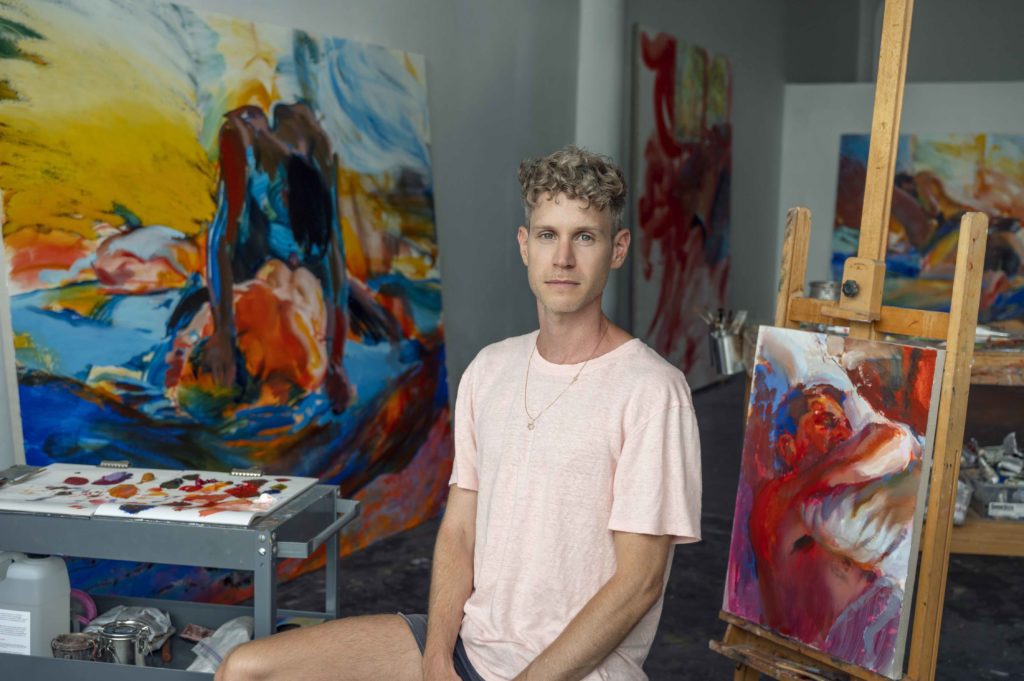
Grayson Perry
In his work, Grayson Perry tackles subjects that are universally human: identity, gender, social status, sexuality, religion. Autobiographical references can be read in tandem with questions about décor and decorum, class and taste, and the status of the artist versus that of the artisan.
Writing about the work on view, Perry says, ‘Black Dog is the name Winston Churchill used for his depressions. This piece is about the roots of depression: emotional trauma and turmoil. Some of the drawn scenes are from my childhood…’ Commenting on the 2011 work Shrine to Alan and Claire, Perry says, ‘This is a shrine to integration. Alan Measles represents my maleness whilst Claire is associated with feelings seen as predominately female. Many problems we encounter in society come from an imbalance in the way these two sides of our personalities are dealt with…’
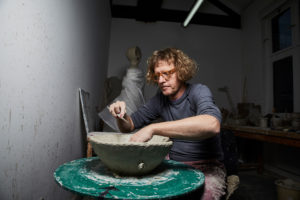
Paula Rego
‘It’s a coming of age party. There is no cake but everyone wants
a slice of the girl.’— Paula Rego
An artist of uncompromising vision and a peerless storyteller, Paula Rego has since the 1950s brought immense psychological insight and imaginative power to the genre of figurative art. Drawing upon details of her own extraordinary life, on politics and art history, on literature, folk legends, myths and fairytales, Rego’s work at its heart is an exploration of human relationships, her piercing eye trained on the established order and the codes, structures and dynamics of power that embolden or repress the characters she depicts.
The works on view are from an important, though rarely seen series that tackles a host of themes of abuse and exploitation, including female genital mutilation and rape. Rego is especially celebrated for works that forcibly address aspects of female agency and resolve, suffering and survival, such as the Dog Women series, begun in 1994 and the Abortion series, 1998–99, which is considered to have influenced Portugal’s successful second referendum on the legalisation of abortion in 2007. Reflecting recently on these 2010 works, Rego comments that The Birthday Party is ‘a coming of age party. There is no cake but everyone wants a slice of the girl.’ The Overseer, Rego explains, ‘is keeping an eye on things, soothing the mother as all hands hold down her girl.’
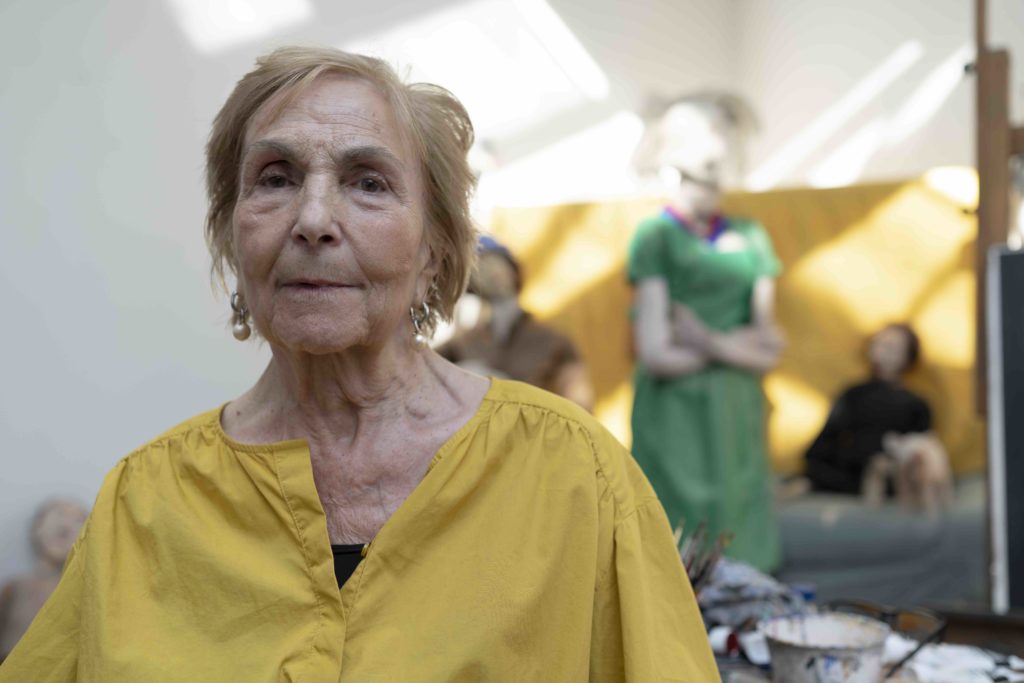
Vortic installation
Vortic is the leading extended reality (XR) platform for the art world. Created in response to the unique demands of today’s art market the platform consists of three different tools for galleries and collectors. Galleries use Vortic Curate, a back-end content management system, to create publicly accessible virtual exhibitions, private views and art fair booths on Vortic’s two apps – Vortic Collect and Vortic VR. Using the latest 3-D scanning technology, galleries are able to stage exhibitions in a photogrammetrically captured replica of their gallery space or in a choice of fully customisable generic gallery spaces. Collectors can also use the Vortic Collect app to view how artworks would look in-situ and to scale in their homes using augmented reality (AR).
The Vortic Collect app is available to download from the App Store now. Learn more about Vortic here.
For enquiries regarding featured works and other matters, please contact the below:
Victoria Miro: salesinfo@victoria-miro.com
